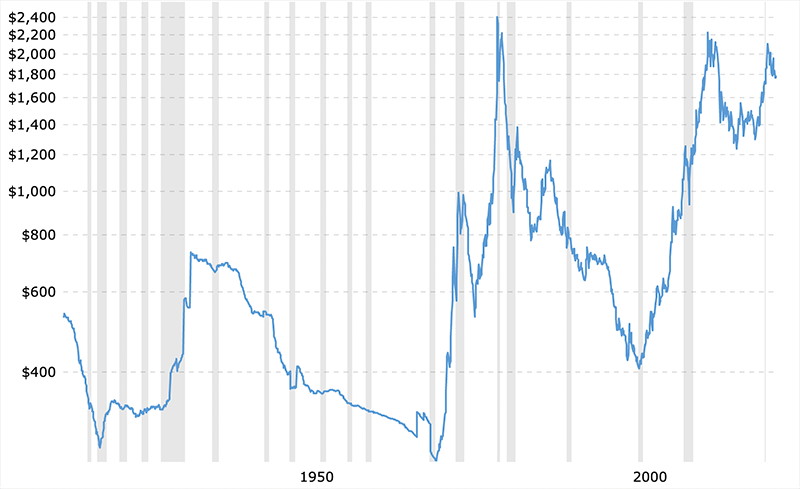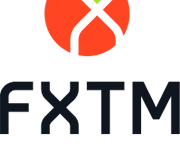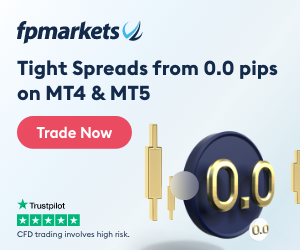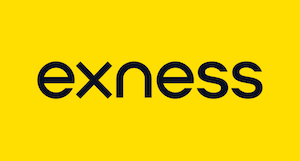For over a decade, FxScouts.co.za has been reviewing forex brokers and provided in-depth analyses. Our extensive research and unique testing methodology ensures that all broker reviews are accurate and fair with hundreds of thousands of data points generated annually. Since 2012, we’ve tested over 180 brokers across global and South African markets. Our team of professionals are frequently cited in global and regional media, shaping market conversations and trends.
-
Best Forex Brokers
Our top-rated Forex brokers
-
Brokers for Beginners
Start trading here
-
Forex Demo Accounts
Learn to trade with no risk
-
ZAR Trading Accounts
Save on conversion fees
-
Lowest Spread Brokers
Raw spreads & low commissions
-
ECN Brokers
Trade with Direct Market Access
-
No-deposit Bonuses
Live trading with no deposit
-
High Leverage Brokers
Extend your buying power
-
Islamic Account Brokers
Best accounts for Muslim traders
-
Market Maker Brokers
Fixed spreads & instant execution
-
All Trading Platforms
Find a platform that works for you
-
TradingView Brokers
The top TradingView brokers
-
MetaTrader4 Brokers
The top MT4 brokers in SA
-
MetaTrader5 Brokers
The top MT5 brokers in SA
-
cTrader Brokers
The top cTrader brokers in SA
-
Forex Trading Apps
Trade on the go from your phone
-
Copy Trading Brokers
Copy professional traders
75-90% of retail traders lose money trading Forex and CFDs. You should consider whether you understand how CFDs and leveraged trading work and if you can afford the high risk of losing your money. We may receive compensation when you click on links to products we review. Please read our advertising disclosure. By using this website, you agree to our Terms of Service.
Introduction to gold trading
Gold has been used as a store of value for thousands of years. Via the Gold Standard, it even had a set link with money, with nearly all countries fixing the value of their currency in terms of a specified amount of gold. That system largely broke down prior to the Second World War, although the US only severed the direct convertibility of US dollars into gold at a fixed price in 1971.
A number of factors explain gold’s allure. It is rare: only around 197,576 tonnes have ever been mined – enough to fit into a 22-metre cube. Gold is difficult to find and mine. Its appeal also lies in its lustrous beauty and its metallic qualities: it is difficult to destroy (unlike other metals, which can corrode over time), yet it can be melted over fire, making it easy to work with and stamp as a coin. The fact that it has been regarded as a precious metal for thousands of years underlines its enduring appeal.
Today, gold is traded freely on the world’s financial markets and is highly in demand. Indeed, it is the third most traded instrument, behind only US Treasury bonds (effectively IOUs issued by the United States government) and the S&P 500 index of US stocks. Gold is more widely traded every day than instruments such as the euro/US dollar (the most traded currency pair), German government bonds or US corporate bonds.
Investors like gold because it is seen to offer protection against inflation: it is a finite physical commodity whose supply can’t easily be added to. Investors also use it to hedge against economic and political instability. So, gold tends to perform well when the stock market falls or when there is a dramatic geopolitical development – the price of gold surged after the terrorist attacks on New York’s Twin Towers on 11 September 2001, for example.
Gold is also in demand from central banks, which use it to diversify their reserves. Central banks now hold more than 35,000 metric tonnes of the metal – about a fifth of all the gold ever mined. As well as being used as a hedge against inflation, gold serves as a source of trust in a country and in all economic environments, making it one of the most crucial reserve assets worldwide, alongside government bonds.
Gold’s inverse relationship with the US dollar, another major reserve asset in central-bank vaults, is another source of its appeal. When the dollar falls in value, gold typically rises, enabling central banks to protect their reserves at times of market volatility.
In addition, gold is in demand from jewellers and coin collectors, and it is increasingly used in the electronics and medical sectors.
The huge liquidity of gold makes it ideal for traders, who know they can always find a buyer or a seller. The high levels of liquidity also ensure that the price is always moving and providing trading opportunities.
What is gold trading?
Gold trading is speculating on the price of gold by buying or selling gold CFDs. By trading gold CFDs, you can make a profit whether the price of gold increases or decreases.
It is simple to set up as a trader and buy and sell gold. You simply need to sign up with one of the many brokers listed on the internet. These brokers link sellers and buyers, and provide a platform on which you can trade the precious metal without having to take physical delivery of it. The market is open 24 hours a day, five days a week, shifting around the globe as one market closes and another opens.
The value of gold fluctuates from moment to moment, as it trades on public exchanges, where it has a price that is determined by supply and demand. Traders can use a number of instruments to profit from these movements. They could, for example, buy and sell the stocks of individual gold miners, which are heavily influenced by movements in the price of gold. Alternatively, they could trade funds that specialise in gold, or trade via a futures contract, which is an agreement to buy or sell something (like gold) at a future date.
Buying a gold futures contract doesn’t mean that you actually have to take possession of the physical commodity. All contracts are closed each day, and traders make a profit based on the difference between the price at which they buy the contract and the price at which they sell it.
Why trade gold CFDs?
However, Contracts for Difference (CFDs) are one of the most popular ways of trading gold, and it is easy to see why given all the advantages they offer. CFDs allow traders to bet on short-term price movements in a wide variety of financial assets, from currencies to shares to cryptocurrencies, without actually owning or taking physical delivery of the assets. They are contracts between a buyer (such as an individual trader) and a seller (such as a broker, investment bank or spread-betting firm), under which the two parties agree to exchange the difference in the value of an underlying financial instrument between the time the contract opens and the time it closes – often over less than one day.
CFDs benefit from several features that make them uniquely valuable to individual traders.
Convenience
A gold CFD is known as a derivative product, because it derives its price from an underlying instrument or product, in this case gold. CFDs allow you to trade the underlying asset (e.g. the price of gold) without taking physical ownership of the commodity – which is a very good thing in the case of a bulky and valuable product like gold. However, even if you don’t physically own the gold, you still get to enjoy any gains.
Maximise your potential gains through leverage
Moreover, CFDs are leveraged products, so you don’t have to deposit the full value of a trade to open a position. The deposit is called your margin, and gold CFDs tend to come with high levels of leverage, which translates into low margin requirements. So, if your broker offers you 50:1 leverage on a US$50,000 CFD position in gold, you will be required to deposit only US$1000 into your account to open the full US$50,000 contract. This means that you can gain significant exposure to the gold market for only a fraction of the amount you would need to buy physical gold.
For example, imagine that a trader believes the price of gold is about to go up. They enter into a contract with a CFD broker, agreeing to buy US$50,000 in a gold CFD contract. But the broker lets the trader put up just 5 per cent of the US$50,000 overall value of the contract, or US$2500. (In this example, the broker is offering 20:1 leverage.) The price of gold increases by 10 per cent during the day, so the overall value of the contract rises to US$55,000, giving the trader an overall profit of US$5000, or double their US$2500 outlay.
Profit from falling and rising markets
You can use CFDs to bet that the price of gold will rise (called going “long” in the jargon) or that it will fall (a “short” position). The latter involves selling CFDs you don’t actually own and then buying them after the price falls so that you can complete the contract you made to sell them at the higher initial price.
Suppose you believe the price of gold will fall. You agree to sell a US$50,000 gold contract in the belief that you can buy it back later in the day at a lower price. Again, you do so using the 20:1 leverage offered by the broker, so your initial outlay is just US$2500. By the end of the trading day, the price of gold has indeed fallen, and the CFD contract is now worth US$45,000. That is when you step in and buy to fulfil your earlier agreement to sell the contract at US$50,000. Again, you have made US$5000, or double your initial outlay.
Moreover, there are no limits on using CFDs to short financial instruments. By contrast, some markets in particular instruments have rules that prohibit shorting or require the trader to borrow the instrument before selling short, or have different margin requirements for short and long positions, making it difficult to balance positions.
Flexibility
You can close a position at any time during the trading day. This means that you can hold a position for as long as you want, be it seconds, minutes or hours. You can even hold a position overnight, although there will be a charge for doing so.
Moreover, many brokers offer a variety of options when it comes to trade size, allowing a wide range of traders to access the market. This includes beginners and casual traders seeking to experiment with investment strategies while limiting their risk by focusing on small trades.
Ability to hedge
Most people are familiar with the term “hedging your bets” and understand that it involves offsetting risks. Well, it means exactly the same thing in the financial world and is derived from the age-old idea of using a hedge – or fence – as a means of protection. In this instance, you can use CFDs as a way of offsetting your trading positions with balancing trades in case your beliefs about whether those initial positions are likely to rise or fall prove wrong.
CFDs are ideal hedging tools because you can use them to bet that an instrument will rise or fall at a relatively low cost. So, you can take a long position in gold that will profit should the price rise, while taking out a short position that will prove profitable should the price fall. In other words, instead of selling gold at a loss should your expectation of the price moving higher prove wrong (and draining your limited financial resources in the process), you can open an additional short position that will generate earnings to help offset any losses from your initial position.
You can also use CFDs to insure against a rise or fall in any investment you have other than CFDs. Suppose, for example, you have a standard portfolio of shares in global equities that you wish to keep invested for the long term. Now imagine you anticipate that global equities will soon encounter turbulence and fall sharply before correcting. You could sell all the shares in your portfolio in the belief that you’ll be able to buy them back at a much lower price. But that could prove costly in terms of transaction expenses and taxes, and it is risky: global equities might rise sharply and you might not then be able to buy them back at a lower cost.
Alternatively, an investor fearing a market correction could take out a long position in gold CFDs, because, as we have seen, the price of gold tends to rise during periods of turbulence in financial markets. You could then sell the gold CFDs when you think they have risen as high as they can go and before the financial-market turbulence ebbs and stock-market prices rise again.
Drivers of the gold price
Gold is in demand from a variety of industries, including jewellery, electronics (gold is an excellent conductor of electricity), medicine and dentistry, and aerospace. Gold is also bought as an investment and traded speculatively. Mine production accounts for around 75 per cent of supply each year, with the shortfall made up by recycling existing gold.
The price of gold has been rising steadily this century. A number of factors have driven this process.
Gold is particularly in demand in Asia, where for traditional and cultural reasons it is regarded as an ideal store of wealth: it provides protection against economic and political turbulence, while also being a status symbol. The increasing affluence of the region over the past 20 years has boosted demand for the precious metal significantly, although the rise is now slowing.
Global economic instability increased after the terrorist attacks in New York in 2001, with the US launching major wars in Iraq and Afghanistan. The rise of China as an economic superpower poses a threat to the Pax Americana that has held sway since the late 1980s, while Russia has also behaved in an increasingly assertive manner. All these factors have encouraged investors to buy gold as protection against a dramatic deterioration in global geopolitical stability.
Central banks around the world responded to the economic slump precipitated by the global financial crisis by unleashing a vast programme of quantitative easing. This, quite simply, has involved printing trillions of dollars to buy up government debt and other financial securities. Many investors fear that these actions could unleash global inflationary pressures that will erode their savings, and they have been buying gold as protection. Moreover, central banks have unleashed a fresh round of quantitative easing in the wake of the COVID-19 pandemic, again to support economic activity. This has boosted fears about inflation and, consequently, demand for gold.
Gold certainly fared well during the 1970s, when inflation became a global problem. During that decade, gold provided annual capital appreciation equivalent to about 16 per cent per year, or around 11 per cent when taking account of inflation.

Figure 1: Gold price over the past 100 years Source: Macrotrends
More recently, the rise of cryptocurrencies may have eroded demand for gold as a hedge against geopolitical instability and inflation. However, gold is likely to remain in demand, given that digital coins carry more risk, being subject to dramatic bouts of volatility.
Trading versus investing in gold
Professional investors such as fund managers tend to shun gold as an investment because it does not provide any return. For example, while stocks can provide a regular income in the form of dividends, and bonds in the form of coupons, gold generates no income. An investor is simply reliant on capital appreciation. There are also long periods when the price of gold remains stable or even declines. That was certainly the case during the 1980s and 1990s, when gold fell out of favour and its price tumbled.
So, for investment purposes, while it may be wise to have a small amount of your savings in gold to help diversify your portfolio and as a hedge against inflation and geopolitics, the figure should be limited to 5 to 10 per cent of a portfolio.
Gold makes much more sense as a trading instrument. As mentioned earlier, the global gold market is vast and highly liquid, and prices fluctuate continually, providing numerous opportunities for buying and selling the precious metal.
The various ways you can trade gold
Traders can seek to exploit movements in the price of gold through a wide variety of instruments. We have already discussed CFDs, buying shares in miners, gold ETFs and futures.
Options
Options provide another means of trading gold. An option is an agreement between two parties to facilitate a potential transaction involving an asset at a preset price and date. However, while the buyer of an option has the right to purchase or sell a specific quantity of the underlying asset (gold in this case) at a predetermined price and time in the future, they are not obliged to do so. There are two types of option: “call” options (where the owner of the option has the right to buy the underlying asset) and “put” options (where the owner of the option has the right to sell the underlying asset).
For example, imagine you buy a call option on 100 ounces of gold with a strike price of US$1000 an ounce and an expiration date of 16 January. This option would give you the right to purchase 100 ounces of gold at a price of US$1000 by 16 January, and you would clearly only wish to exercise the option if gold is trading above US$1000 an ounce at that time.
You pay a price (known as a premium) to buy an option, and this represents your total risk, because you cannot lose more than you pay for any put or call option.
Imagine that a trader pays a price of US$2 per contract for the right to buy 100 ounces of gold at US$1000 an ounce. The total cost of this option will be US$200 (100 x US$2 = US$200). Just before the option expires, gold is trading at US$1050 an ounce, so the trader exercises their option, buying gold at US$1000 an ounce and immediately selling it on the open market for US$1050 an ounce. This option is therefore called “in the money”.
In this example, each contract will sell for US$50 on the expiration date, and because the option represents an interest in 100 ounces, the total revenue or sale price is US$5000. The trader purchased the option for US$200, so their net profit will be US$4800.
Options allow traders to speculate on future price movements while limiting downside risks and opening up huge potential earnings. Imagine, in the above example, that the price of gold doubles to US$2000 an ounce. The trader can only ever lose US$200, or the price of their option, but if gold doubled to US$2000 per ounce, they would reap a profit of US$99,800.
Gold currency pairs
Gold, like many commodities, is traditionally priced in US dollars, and the currency has a unique relationship with the dollar. As a rule, when the value of the dollar increases relative to other global currencies, the price of gold tends to fall in US dollar terms. But gold has a positive relationship with some other currencies, so, for example, when the price of gold goes up, the Australian dollar rises against the US dollar. Similarly, a rise in the price of gold tends to cause the Swiss Franc to gain in value. Australia is a major producer of gold, so it gains from higher gold prices in terms of export revenues, while Switzerland holds around 25 per cent of its central bank reserves in gold, so the country clearly benefits from higher gold prices.
Traders can use these well-established relationships in currency pairs to speculate and make money or to hedge their bets.
What are the advantages of gold CFD trading?
CFD trading is one of the most popular ways of trading gold because of its many benefits. It is convenient and flexible, you can trade with leverage to maximise your profits, and you can profit from both rising and falling markets.
Gold is one of the largest and most easily accessible markets in the world. The costs involved are relatively low compared with other markets, there are lots of brokers to choose from, and it is relatively easy to understand the ways in which you can trade the market. A vast amount of information is available to would-be traders, ranging from basic guides on how to get started to videos and books outlining potentially profitable trading strategies.
You can trade from your living room using a fairly basic computer if you download the appropriate trading software, and it is relatively easy to set up an account with a broker. If you trade gold CFDs, you can also exploit the concept of leverage, where you make use of borrowed money to increase your potential profits – although you should be aware that leverage also dramatically increases your risk. There are methods you can use to contain risk, but that is a topic for another article.
The disadvantages of gold trading
Commitment
Gold trading requires a considerable commitment. It takes time to learn how to trade profitably, and when you start to trade you may have to spend many hours per day on your computer screen following and researching what is happening in the market – and why – in preparation for your trading day. When that day is finished, you will need to analyse what happened and why your trading activities succeeded or failed, so that you can apply the lessons learnt to the next day’s trading. There could be days when you lose money and it is easy to become disheartened. There is certainly no guarantee of success. Gold trading can be risky. You may lose money or you may simply find that it is not something you like or have the temperament for. You have to be patient, for example, when waiting for opportunities to arise, and the market can experience bouts of extreme volatility that you may find highly stressful.
Leverage
Leverage is a double-edged sword. Suppose, using the earlier example, you agree to buy US$50,000 in a gold CFD contract, and the broker lets you put up just 5 per cent of the overall contract value, or US$2500. However, this time the price of gold falls by 10 per cent, so the overall value of the contract drops to US$45,000. Now you have turned your US$2500 outlay into a whopping US$5000 loss.
Moreover, if the capital in your account falls below a certain level, you may be subject to a “margin call”, where the broker asks you to put up additional funds to balance the account. If you fail to do so, the broker may close your positions, so crystallising your losses.
You can protect against potential losses to a certain degree. Brokers such as CMC Markets, for example, incorporate negative-balance protection into retail accounts, so your losses will be limited to the value of the funds in your account.
Constant monitoring
You need to be alert to changes in your position at all times. Market volatility and rapid changes in price – which could arise outside normal business hours if you are trading international markets – can cause the balance of your account to change quickly. If you do not have sufficient funds in your account to cover these situations, your positions will be automatically closed.
Market volatility and gapping
Financial markets can be very volatile and the prices of financial instruments can rise or fall precipitately at times, jumping to a much lower or higher price rather than moving gradually. This is called gapping and it can have a significant impact on traders.
For example, traders may use stop-loss orders to limit losses. This involves specifying a price at which your position closes out if an instrument’s price goes against you. When gapping occurs, however, those stop-loss orders may be executed at unfavourable prices – either higher or lower than you may have anticipated, depending on the direction of your trade.
It is easy to take on too much risk
Because the cost of trading gold CFDs is low, due to leverage, it is easy for investors to be lulled into a false sense of security and take on more trades than is prudent. This can leave them overexposed to the markets at any given time, such that their remaining capital would be insufficient to cover losses across the portfolio. If multiple positions go wrong, it can spell financial ruin for those who adopt a less than cautious approach to CFD trading.
Gold trading fees
There are a number of fees and costs associated with trading gold CFDs. As explained earlier, when you open a CFD trade you must pay a portion of its full value up front. This deposit is called the margin, and the percentage you have to pay on the overall value of the trade will affect the affordability of your trading.
Commission and spread
The costs of CFD trading include the commission charged by the broker and the spread, i.e. the difference between the bid and offer prices at the time you trade.
Commission (normally around 0.10 per cent) is charged when you buy or sell a CFD on shares. The commission charge varies depending on the country where the share product originates.
However, commissions are not charged on other products, such as foreign currency, indices, cryptocurrencies, commodities, including gold, and treasury instruments.
The spread is the way the broker earns money when dealing in non-share CFDs. It is simply the difference between the price at which you can buy a CFD and the price at which you can sell that same CFD at the same moment. The price at which you buy (bid price) is always higher than the price at which you sell (ask price), and the underlying market price will generally be in the middle of these two prices. Trading spreads add costs to a trade and will fluctuate along with an asset’s price and trading volume.
Financing charge
If you hold a long position, you will also be charged interest to hold that position overnight. This is referred to as a financing charge and is calculated as the current overnight interest rate charged by the major banks plus 2 to 3 per cent. If you hold a short position overnight, you will receive a payment of the current overnight interest rate minus 2 to 3 per cent.
For example, the broker IG says that for long positions it charges 2.5 per cent above the relevant interbank rate, so if the relevant interbank 1-month rate is 0.5 per cent, you would be charged 3.0 per cent. For short positions, traders receive the relevant interbank rate minus 2.5 per cent. So, if the interbank rate is greater than 2.5 per cent, IG will credit your account. But if the interbank rate is less than 2.5 per cent, your account will be debited. As an example, if the relevant interbank 1-month rate was 0.5 per cent, you would be charged 2.0 per cent (annualised).
Weekend fees
You will be charged extra if you keep a position open over the weekend, as opposed to overnight.
Withdrawal fee
Some brokers may charge a fee to withdraw money. eToro, for example, says that it charges US$5 for withdrawals “to cover some of the expenses involved in international money transfers”. The fee may vary depending on the currency involved. Some brokers may offer a set number of free withdrawals per month.
Conversion fees
Some brokers will charge a fee to convert one currency into another. eToro gives an example of around a US$10 cost to convert a deposit of £2000 into US dollars.
Inactivity fee
A fee may be charged if an account goes unused for a set period. One broker, for example, charges a US$10 monthly inactivity fee on any remaining available balance if there has been no login activity for more than 12 months.
Gold trading strategies
Forex traders tend to regard gold as simply another currency, so the strategies applicable in forex trading are also used to trade gold. XAU is a globally recognised symbol that denotes 1 troy ounce of gold, and the XAU/USD symbol shows how many dollars are required to buy an ounce of gold.
Here are some of the main strategies used to trade gold.
XAU/USD scalping strategy
This seeks to profit from gold’s fluctuating price. Scalping is an ultra-short-term strategy that involves buying and selling a currency pair (XAU/USD in this case) within a few seconds or minutes.
Currency fluctuations are measured in terms of a pip (percentage in point), which is also a unit used by traders to measure their profits or losses. Scalpers hope to make anywhere between 5 and 10 pips per trade, and they repeat the buying and selling process multiple times during each trading session. Most scalp trades involve leverage.
Technical analysis
Some traders believe that prices for gold (and other financial instruments) move in particular patterns. They rely on indicators to determine when a trend is taking hold and then trade on the basis that that trend will continue.
Technical analysis traders begin by seeking to understand where the price is heading according to the fundamentals of supply and demand. So, if we are in a period of geopolitical instability, the price of gold is probably heading upwards. They then use charts that detail previous highs and lows, trend lines and patterns.
When the gold price is rising, a significant previous high above the current level will be an obvious target, as will an important previous low when the price is falling. Also, in an uptrend, a line on the chart connecting previous highs will act as resistance when above the current level, while a line connecting previous lows will act as support – with the reverse true in a falling market. As for chart patterns, those like head-and-shoulders tops and double bottoms are just as relevant as they are when trading currency pairs.
Momentum trading
Momentum measures the rate of change in closing prices for a currency pair, for the gold–dollar relationship (XAU/USD), or for a stock or commodity. It is often used to detect weakness or inherent strength in a pair. Importantly, it signals where potential reversal points are, or when trends are about to begin.
Forex traders always look for changes in momentum, as it makes it easier to predict the volatility in the currency exchange market. A trend is strongest when there are high momentum readings to the upside or the downside.
Commodity Channel breakouts
This strategy is based on the idea that the highs and lows of every commodity price cycle, including those for gold, can be predicted in advance. The Commodity Channel Index is used to identify overbought and oversold conditions, and bullish and bearish divergences, to detect momentum shifts earlier and to anticipate trend reversal.
Seasonal patterns
There is evidence that the price of gold moves according to a seasonal cycle, rising in the first quarter of the year and in the last months of the year as well. Ideally, you should buy gold during the seasonal dip and sell as the price picks up or peaks. For example, you could sell gold in March and then buy in August or September.
This strategy is more suitable for traders with a higher risk appetite.
Gold trading tips
Traders can make consistent profits from trading gold, but preparation is key. Follow these tips and you will maximise your chances of trading gold successfully.
Use a demo account
All good brokers offer demo accounts where you can practise trading using virtual money. You can learn how the market works, how to place buy and sell orders, and how to deploy strategies, etc. at no risk to yourself. Do this for as long as you can. If you are consistently making a profit, it might be time to sign up for a real account.
Educate yourself
Good brokers offer lots of educational material on their platforms. There is also much material on the internet – including videos and examples of trades – that can help you learn all you need to know to trade successfully.
Don’t get emotional
Trading can be very stressful. Using a demo account can help you to decide whether the stress of losing money is for you or not. It is important to keep your cool when the market turns against you and know when to exit a position and accept your losses.
How to begin gold trading
All you need to do to start trading gold is to find a forex broker that you like and open an account. This is simple and can be done online. You will be asked to provide proof of identity and a deposit.
You can use either an onshore broker regulated in South Africa or an offshore broker. You are likely to be better protected if you use a South African broker since they will be regulated by the Financial Sector Conduct Authority (FSCA). If things go wrong and your broker is registered in a country thousands of miles away, it might be difficult to gain legal redress.
However, there are advantages to using an offshore broker. The main advantage is that you won’t be subject to the same restrictions as when using a South Africa-based broker regulated by the FSCA.
There are things you should consider whether you use an FSCA-registered broker or one based offshore. These include:
- The trading experience – is the trading platform easy to use, what kind of support do they offer, and are there tools that can help with research, etc?
- Trading costs and transparency – these can vary widely from broker to broker. Some charge a fixed commission regardless of how much you trade, while others charge a fee based on trading volume (the higher the volume, the greater the commission). Other brokers don’t charge a commission but instead charge a spread fee. The spread is the difference between the price the broker quotes you for buying a currency and the price it quotes for selling it. This is effectively the fee your broker charges you to trade. (For example, imagine the US dollar is trading at 1.40 to the pound and you decide to buy some dollars. The broker may quote you a price of 1.4002, so you have been charged two pips – “percentage in point” or “price interest point” – for your trade. The pip is thus $0.0001 for US dollar-related currency pairs.) It is also important to be aware of the hidden fees some brokers charge, such as inactivity fees, monthly or quarterly minimums, and fees associated with calling a broker on the phone.
- Customer service – you can trade 24 hours a day, five days a week, but does the broker offer 24-hour support? Is help available instantaneously online or via the phone, or do you have to wait for a response? You can check by calling the broker at different times of the day before signing up.
- Minimum deposit – this can vary from just US$1 to US$300, but most brokers let you open an account with around US$100.
- Maximum leverage – there is no standard on leverage limits for forex brokers regulated by the FSCA. Both the FSCA and offshore brokers can offer higher levels of leverage. Some provide a 500:1 ratio, and it can be as high as 3000:1 which would be irresponsible for any trader to consider using.
FAQs
How do you trade gold online?
Trading gold online is easy. You simply open an account with an online broker, deposit some money and start trading. In reality, however, you may need to practise trading for many weeks using a demo account and virtual money. There is a huge amount to learn in terms of market drivers, how to place trades, what strategies to use, how to deploy these strategies, etc.
Which is the best gold trading broker in South Africa?
HFM is the best broker for trading gold in South Africa. Traders can choose from several trading platforms, including MT4, MT5, and its own web trader. HFM also provides market analysis by the hour so traders can make better gold trading decisions.
What drives the gold price?
Demand for gold – and hence its price – rises during times of geopolitical and financial-market turmoil as gold is regarded as a haven.
When can you trade gold?
You can trade gold five days a week, 24 hours a day, when the main global markets are open.
How do you trade or invest in gold?
You can buy physical gold in bars or coins to hold as an investment, or you can invest in stocks or funds that mirror the price of gold. Traders tend to use instruments such as Contracts for Difference (CFDs) to invest in gold.
Can you short gold?
Yes, you can short gold using CFDs.
How much leverage can you apply to gold trades?
Usually, the maximum ratio is 30:1, but some offshore brokers may offer higher rates of leverage.
What’s the minimum amount of money needed to trade gold?
You can open an account for as little as US$100 and start trading gold.
Which are the best gold ETFs?
The best-performing gold ETFs in 2021, according to NerdWallet, are the following:
- GraniteShares Gold Trust (BAR)
- Goldman Sachs Physical Gold ETF (AAAU)
- VanEck Merk Gold Trust (OUNZ)
- Aberdeen Standard Physical Gold Shares ETF (SGOL)
- iShares Gold Trust (IAU).
Forex Risk Disclaimer
Trading Forex and CFDs is not suitable for all investors as it carries a high degree of risk to your capital: 75-90% of retail investors lose money trading these products. Forex and CFD transactions involve high risk due to the following factors: Leverage, market volatility, slippage arising from a lack of liquidity, inadequate trading knowledge or experience, and a lack of regulatory protection. Traders should not deposit any money that is not considered disposable income. Regardless of how much research you have done or how confident you are in your trade, there is always a substantial risk of loss. (Learn more about these risks from the UK’s regulator, the FCA, or the Australian regulator, ASIC).
Our Rating & Review Methodology
Our Broker Awards and Forex Rankings Report and Directory of CFD Brokers to Avoid are the result of extensive research on over 180 Forex brokers. These resources help traders find the best Forex brokers – and steer them away from the worst ones. These resources have been compiled using over 200 data points on each broker and over 3000 hours of research. Our team conducts all research independently: Testing brokers, gathering information from broker representatives and sifting through legal documents. Learn more about how we rank brokers.
Editorial Team

Chris Cammack
Head of Content
Chris joined the company in 2019 after ten years experience in research, editorial and design for political and financial publications. His background has given him a deep knowledge of international financial markets and the geopolitics that affects them. Chris has a keen eye for editing and a voracious appetite for financial and political current affairs. He ensures that our content across all sites meets the standards of quality and transparency that our readers expect.

Alison Heyerdahl
Senior Financial Writer
Alison joined the team as a writer in 2021. She has a medical degree with a focus on physiotherapy and a bachelor’s in psychology. However, her interest in forex trading and her love for writing led her to switch careers, and she now has over eight years experience in research and content development. She has tested and reviewed 100+ brokers and has a great understanding of the Forex trading world.

Ida Hermansen
Financial Writer
Ida joined our team as a financial writer in 2023. She has a degree in Digital Marketing and a background in content writing and SEO. In addition to her marketing and writing skills, Ida also has an interest in cryptocurrencies and blockchain networks. Her interest in crypto trading led to a wider fascination with Forex technical analysis and price movement. She continues to develop her skills and knowledge in Forex trading and keeps a close eye on which Forex brokers offer the best trading environments for new traders.
Stay updated
This form has double opt in enabled. You will need to confirm your email address before being added to the list.























































